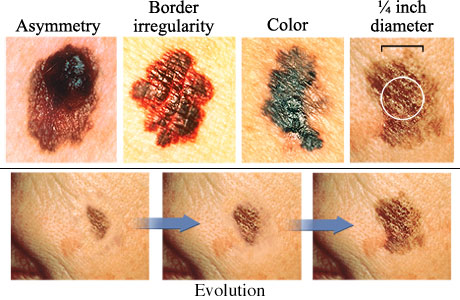Treatment Overview
Treatment for melanoma is based on the stagestage of the cancer and other things, such as your overall health. The main treatment is surgery to remove the cancer. Other treatment options may include immunotherapy and targeted therapy.
If melanoma has spread beyond the skin (metastatic cancer), you may have surgery. You'll probably need other treatments too. These may include immunotherapy or targeted therapy. In some cases, radiation therapy or chemotherapy may be used.
Your doctor will talk with you about your options and then make a treatment plan.
Surgery
The doctor removes the cancer and a border of normal skin (margin) around it. If you have early-stage cancer, the doctor may be able to remove all of it. You may not need more treatment.
If a large melanoma is removed, you may need a skin graft or other repair surgery.
In some cases, one or more lymph nodes may be removed.
- The doctor may remove the first lymph node that the cancer may have spread to. This is called a sentinel lymph node biopsy. If no cancer cells are found, you may not need to have more lymph nodes removed.
- If cancer is found in the sentinel lymph node, nearby lymph nodes may be removed and checked for cancer cells.
After surgery, you may have only regular checkups. Or you may also have other treatments to help prevent a return (recurrence) of the cancer.
Medicines
Medicines used to treat melanoma include:
- Immunotherapy. This treatment helps your immune system fight cancer. The medicine may be spread on the melanoma or injected into it. Or it may be injected into a vein or under the skin.
- Targeted therapy. These medicines target cancer cells and may cause less harm to normal cells. They help keep cancer from growing or spreading. Some of these medicines target a specific gene in the cancer cells. If you have a gene that can be targeted, you may be given one or more of these medicines. They are usually given as pills.
Treatment for metastatic or recurrent cancer
Melanoma that has spread to other parts of the body (metastatic cancer) may cause tumors. These can sometimes be removed with surgery. But metastatic melanoma often needs other treatments too. Examples include immunotherapy, targeted therapy, and chemotherapy. These treatments and others may also be used for melanoma that has come back after treatment (recurrent cancer).
Radiation therapy may help relieve symptoms caused by melanoma that has spread to the bones or other organs. Radiation therapy uses high-dose X-rays to destroy cancer cells and shrink tumors.
Clinical trials are research studies that test new treatments to find out how well they work. Your medical team can tell you if there's a clinical trial that might be right for you.
Learn more
- Clinical TrialsClinical Trials
- Immunotherapy for CancerImmunotherapy for Cancer
- Lymph Node Removal (Lymphadenectomy) for MelanomaLymph Node Removal (Lymphadenectomy) for Melanoma
- Melanoma Excision SurgeryMelanoma Excision Surgery
- Radiation Therapy for Cancer PainRadiation Therapy for Cancer Pain
- Radiation Treatment for CancerRadiation Treatment for Cancer
- Sentinel Lymph Node BiopsySentinel Lymph Node Biopsy














